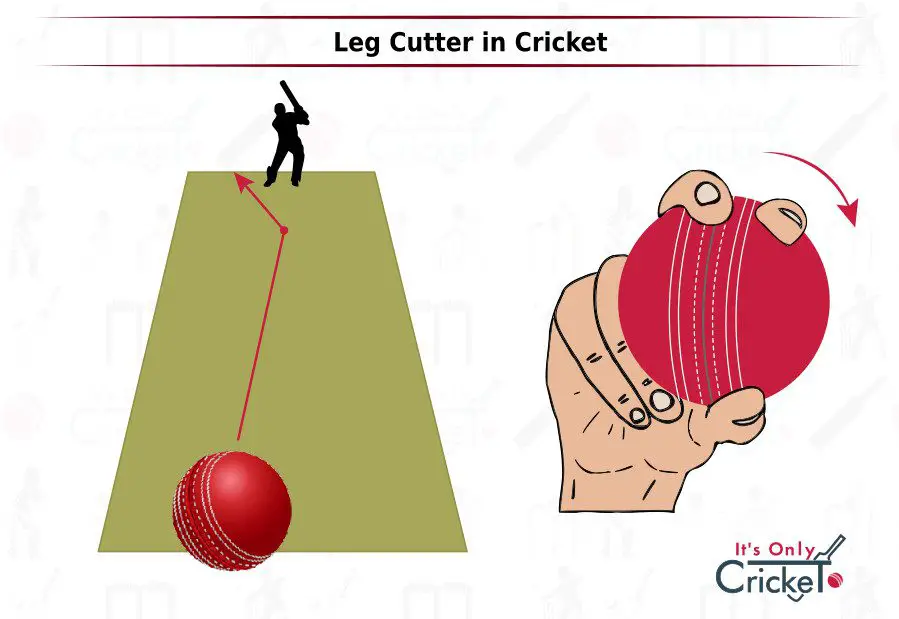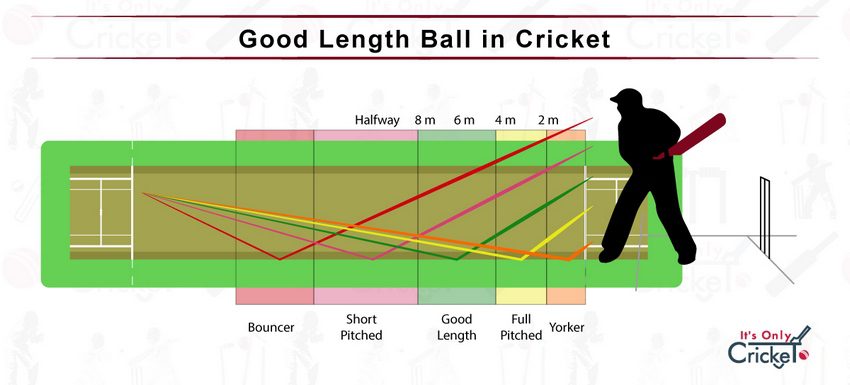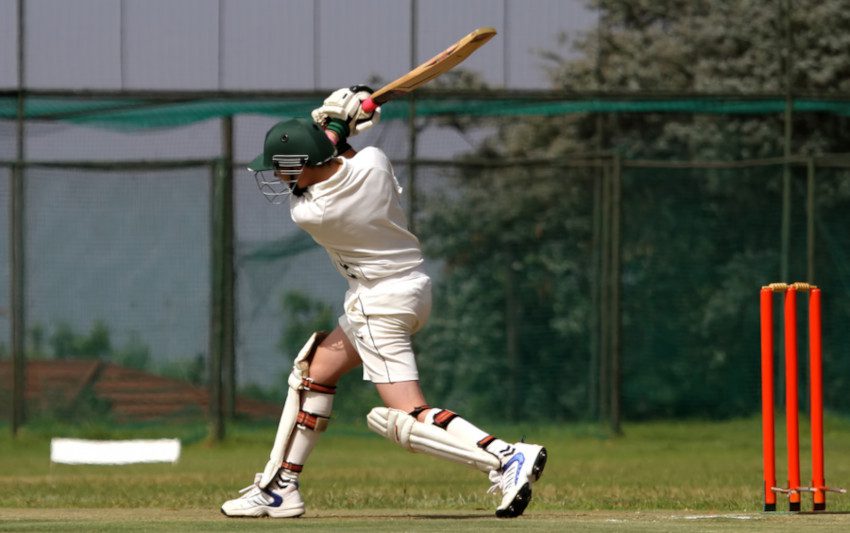Table of Contents
Developing the leg cutter is a very useful skill for fast bowlers. In this round up, I’ll outline what the delivery can do and how you can bowl it in the nets and in match situations.
What is a Leg Cutter in Cricket?
A leg cutter is a delivery in cricket which is sent down by the faster bowlers. If bowled correctly, it will deviate from the leg side to the off side when a right arm bowler is delivering to a right handed batter.
A leg cutter will not turn as sharply as a standard leg break, but that deviation can still cause problems for the batter.
How To Bowl a Leg Cutter?
The Correct Grip
It all starts with the grip which is similar to that of a standard seam bowler’s delivery. The difference is that, as the fingers split, the middle finger stays in a central position at the very top of the ball while the index finger slides down the side.
That index finger is going to impart spin as the ball is released.

Releasing the Ball
Don’t change any aspect of your run up. We don’t want the batter to suspect that a variation is coming up. Run in as usual and, when the time comes to release the ball, it should be rotated slightly.
A right arm bowler should drag their middle finger down the left side of the ball. For a left arm bowler, that will be dragged to the right. The action has been described as ‘turning a doorknob’ and I think that’s a good description of the process.
Where to Pitch the Leg Cutter?
This is a surprise ball so we don’t want to waste it by pitching the ball in the wrong areas. Many recommend that you look to land it just outside off stump. The idea is that you are tempting the batter into a drive and the turn could see them edge the ball to slip.
That theory could certainly work, but I would also recommend attempting to land the ball on off stump or off and middle. If the batter is not suspecting a leg cutter, they have to play at that ball, and there is a greater chance that the edge of the bat will come into play.
Good Length
If a leg cutter is on a good length it can tempt the batter to play that drive and this is where we are looking to find the edge of the bat. Make sure that there is a slip in play or, if it’s a limited overs game, the wicket keeper knows what delivery is coming.
Maybe a secret and discrete signal can alert the keeper to the greater chance of an edge.
Yorker Length
Any type of yorker is difficult to play and the leg cutter is no exception. A full ball of this kind will mean that any turn is less of a factor, but the leg cutter yorker has other benefits.
The spin imparted on release can allow the ball to drift and the batter may lose the ball in the flight. See Steve Harmison’s slower ball yorker to Michael Clarke in 2005 for a great example.
Short Length
A shorter length leg cutter can still be useful, particularly if pace is taken off the ball. If you’ve watched limited overs cricket on a fairly regular basis, you’ll already know that a lot of seam bowlers like to deliver the slow ball bouncer.
If the slower, short leg cutter is bowled accurately, it’s a surprise delivery and the batter will struggle to time the ball.

Factors to Consider
A leg cutter can work in any match situation, but there are times when the conditions will be more in its favour. If there is no swing or seam movement, this can be a time when the cutters come into play.
Similarly, if you are playing on a surface that is helping the spin bowlers, that same spin can assist the cutters. A random leg cutter on any surface can be a good idea, but remember to assess those conditions too.
How to Bat Against a Leg Cutter?
As a batter, if you suspect that a leg cutter is coming, the best advice is to look to play off the back foot. This will allow you to have as much time as possible to assess the turn and play the right stroke.
As a surprise ball, it’s difficult to know when the leg cutter is coming and that’s why the bowler can have an advantage with it. If the ball is full then it’s tough to play off the back foot. One piece of advice is to stay deep in the crease. If the bowler has already used a leg cutter or is known to do so, this could be helpful.
Conclusion
All of the advantages are with the bowler when it comes to delivering leg cutters. If there is turn and the batter isn’t expecting it, it can be a seriously useful ball. While the spin isn’t as dramatic as a traditional off break, the higher pace of the ball can lead to problems for the batters.
For those reasons, I would recommend that all faster bowlers look to master the off cutter in the nets, before using it in a match situation.


